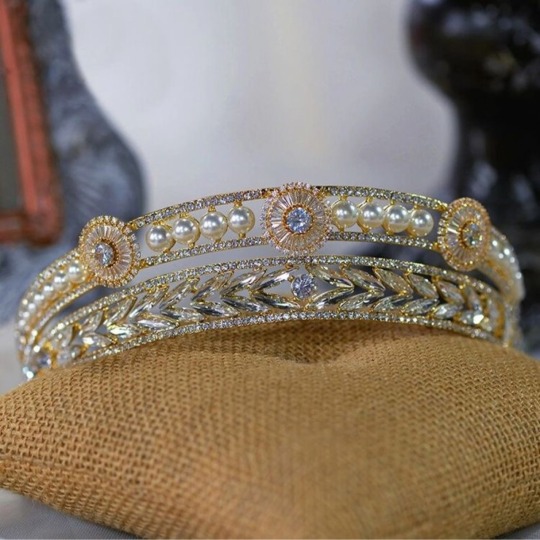#pearl and diamond tiara
Text
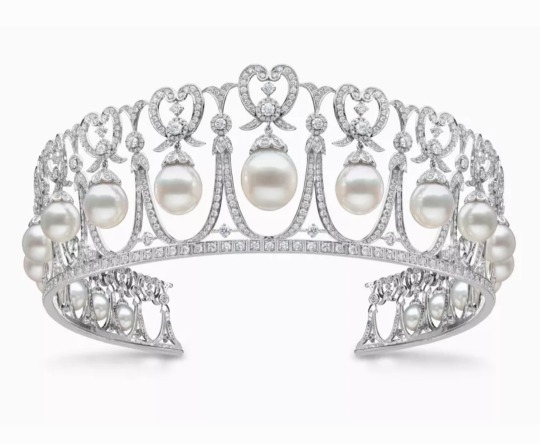
Yoko London South Sea Drop Pearl and Diamond Tiara, Created To Mark The Occasion Of King Charles III's Coronation
Photo Courtesy: Yoko London
Source: wallpaper.com
#yoko london#south sea pearl#diamonds#high jewelry tiara#contemporary tiara#contemporary high jewelry#king charles iii#south sea pearl jewelry#pearl and diamond tiara#modern tiara#high jewelry#luxury jewelry#fine jewelry#fine jewellery pieces#gemville
135 notes
·
View notes
Text
Pink Tiaras
Russian Pink Diamond Tiara by Jacob David Duval, circa 1800
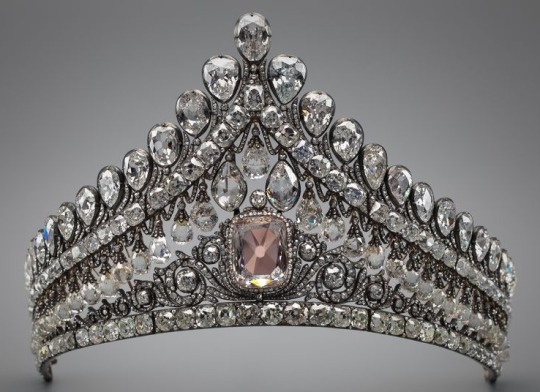
Bagration Pink Spinel Tiara by Fossin, early 1800s

Prussian Pink Topaz Tiara
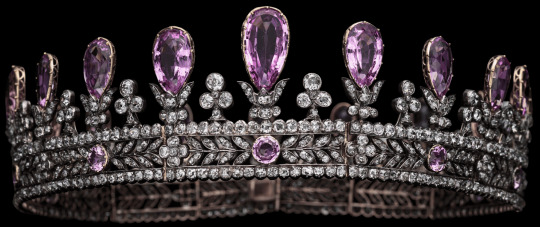
Württemberg Pink Topaz Tiara
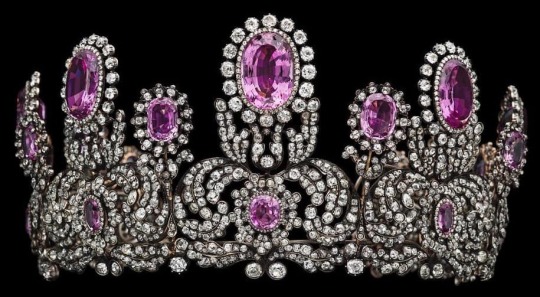
Savoy Pink Tourmaline Tiara

Conch Pearl Tiara, late 1800s
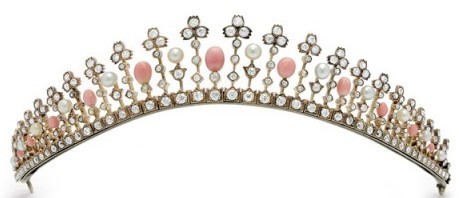
Bowknot Pink Topaz Tiara by Chaumet, circa 1890

Butterfly Pink Sapphire & Pink Quartz Tiara by Just Andersen, circa 1920
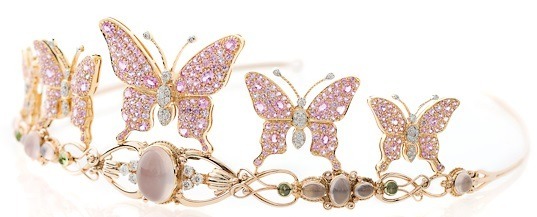
Pink Diamond Tiara by Garrard
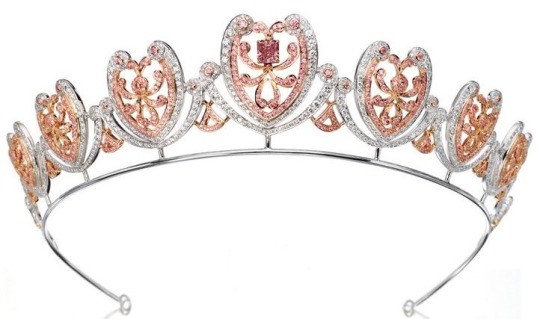
Argyle Pink Diamond Tiara by Asprey, 2010

Butterfly Pink Spinel Tiara by Tiffany & Co, 2015
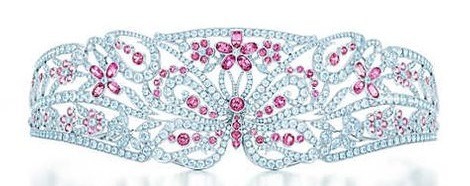
Passion Incarnat Pink Spinel & Rhodolite Garnet Tiara by Chaumet, 2016
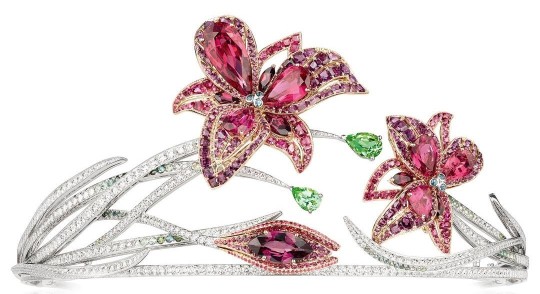
Jeux de Rubans Conch Pearl Tiara by Mikimoto, 2018
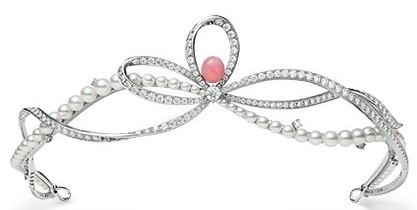
Maze Pink Tourmaline Tiara by Pino Spitaleri, 2021
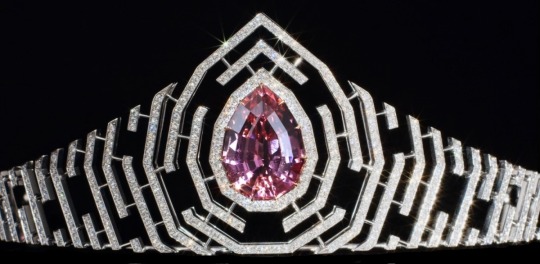
Andromède Pink Sapphire Tiara by Van Cleef & Arpels, 2023
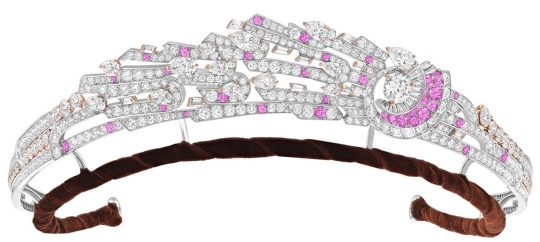
#Tiara Talk#tiara#diadem#pink spinel#pink sapphire#pink topaz#pink tourmaline#pink diamond#Van Cleef and Arpels#conch pearl#Pino Spitaleri#Mikimoto#Chaumet#Tiffany#Asprey#Garrard#Jacob David Duval#spinel#diamond#topaz#tourmaline#sapphire#tiaras#diadems
754 notes
·
View notes
Text



Magnificent and Historic Natural pearl and diamond tiara/necklace
"One of the most important tiaras to appear at auction in recent years, this royal tiara dates to the second half of the 19th century. Steeped in the rich history of the House of Savoy, this tiara hails an extraordinary provenance. Likely to have been presented to Maria Vittoria dal Pozzo in 1867 as a wedding gift on the occasion of her marriage to Amedeo of Savoy, Duke of Aosta, later elected King of Spain as Amadeo I (1870- 1873), the tiara, which has remained with the family for over 150 years, is believed to have been created by Musy Padre e Figli – Court Jeweller of Turin, and one of the oldest goldsmiths in Europe.
Composed of graduated scroll motifs set with cushion-shaped, circular- and single-cut diamonds, framing eleven slightly baroque drop-shaped natural pearls, the jewel has more recently been seen worn as an elegant necklace.
The tiara is designed as a succession of eleven graduated scroll motifs, each composed of a natural pearl surrounded by old cut diamonds. The surmount rests on a detachable band composed of cluster and bar motifs set with cushion-shaped diamonds. The scroll motifs are detachable and may be adapted and worn as a necklace. The tiara, which was created by Musy, belonged to Maria Vittoria Carlotta Enrichetta Giovanna dal Pozzo della Cisterna (1847-1876), Duchess of Aosta and Queen of Spain."
Sotheby's
#sotheby's#sothebys#spanish royal family#italian nobility#italian royal family#tiara#tiaras#diadem#diadems#necklace#convertible#diamond#diamonds#pearl#pearls#tiara crown#tiaras crowns#tiarascrowns#tiaracrown
163 notes
·
View notes
Text
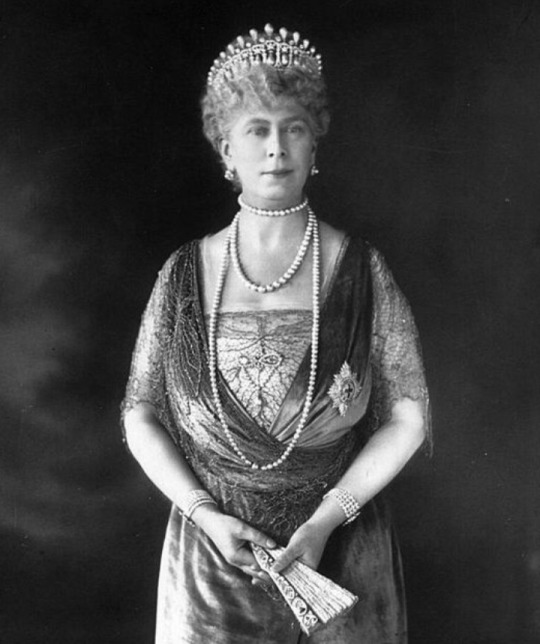


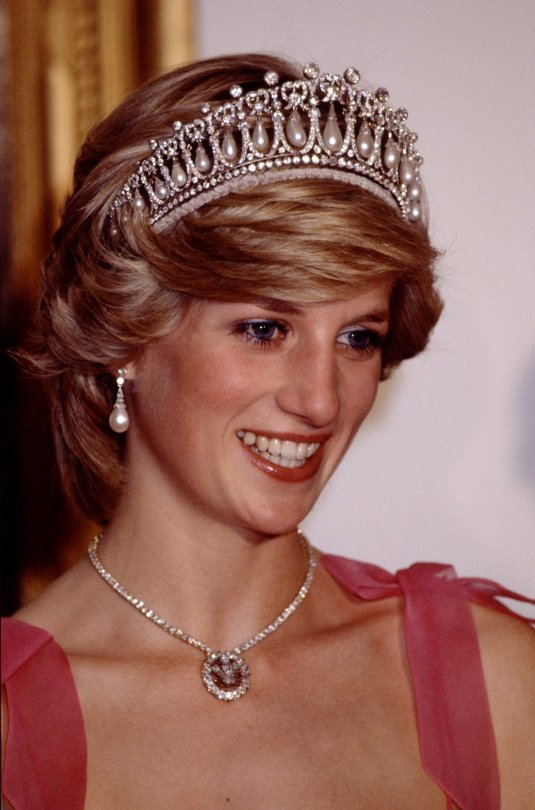
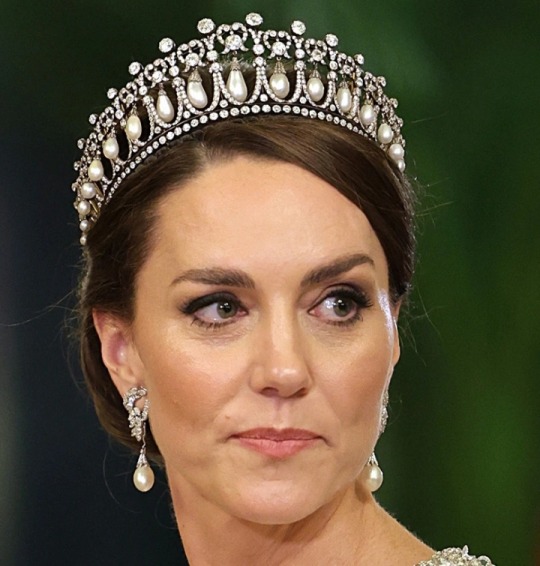
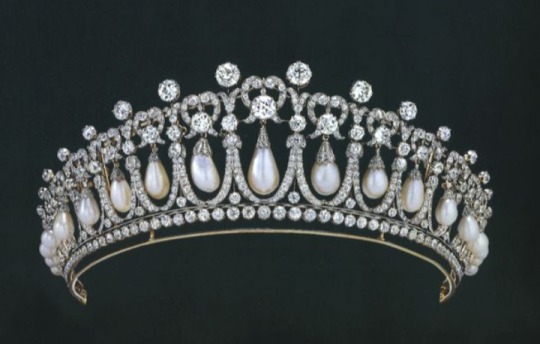
"Queen Mary Lover Knots Tiara"
- Original owner: Queen Mary of Teck (it can be worn with top pearls too)
- HM Queen Elizabeth II (inherited from her grandmother)
- Lady Diana Spencer, Princess of Wales (permanent loan until divorce)
- The Princess of Wales (permanent loan)
#brf#king charles III#The Vault#queen mary of teck#queen elizabeth II#Diana#the princess of wales#Tiara#pearl#diamond#royal jewels
26 notes
·
View notes
Photo

Tiara
c.1860s
Christie’s
#tiara#fashion history#historical fashion#jewelry#1860s#victorian#19th century#pearl#diamond#christies
678 notes
·
View notes
Text

CATHERINE'S STYLE FILES - 2017
5 DECEMBER 2017 || The Duchess of Cambridge, along with Prince William, attended the annual Diplomatic Corps Reception at Buckingham Palace.
#british royal family#british royals#royalty#royals#royal#kate middleton#catherine middleton#british royalty#brf#duchess of cambridge#catherines style files#style files 2017#princess diana : collingwood pearl earrings.#collingwood pearl earrings.#collingwood earrings.#lovers knot tiara.#queen mary : lovers knot tiara#queen mary : lover's knot tiara#lover's knot tiara#queen elizabeth ii : diamond collet necklace.#diamond collet necklace.#5122017#DiplomaticReception17#mine.#royal fashion#fashion#style#princess of wales#the princess of wales#princess catherine
26 notes
·
View notes
Photo

16 April 2018 | Queen Letizia of Spain attends a dinner gala for the President of Portugal Marcelo Rebelo de Sousa at the Royal Palace in Madrid, Spain. (c) Borja Benito - Pool/Getty Images
29 notes
·
View notes
Text
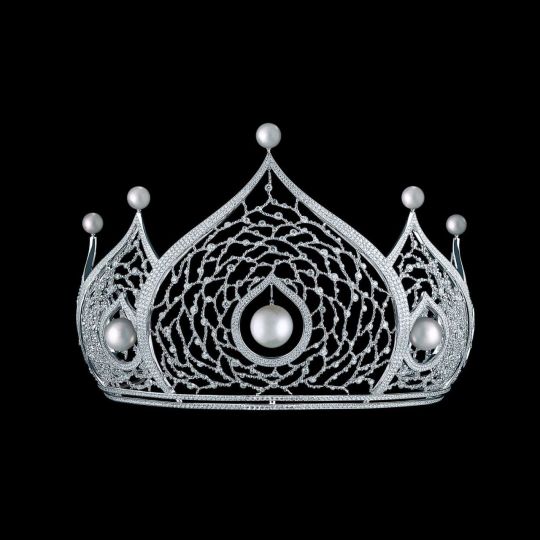
Diamond & Pearl Tiara - by Voznesensky
5 notes
·
View notes
Text


The Danish Emerald Parure
Perhaps the jewel in the Queen’s crown collection is her Emerald Parure.
Created in 1840 for Queen Caroline Amalie, the set includes a tiara, a necklace, earrings, and a corsage brooch.
27 of the diadem’s emeralds date back to 1723, making the collection incredibly historically significant.
While the colour is in-keeping with the current Queen Margrethe’s more outlandish style, we can see Crown Princess Mary reaching for the tiara or earrings for big state events.
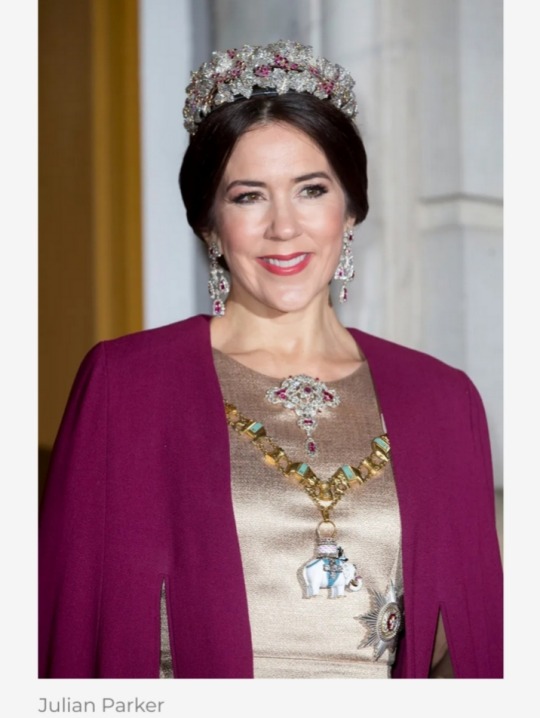
The Danish Ruby Parure
Crown Princess Mary has already made herself familiar with this unique piece.
Like a naughty daughter venturing into a mother's wardrobe, Mary has not waited until her ascension to borrow this spectacular ruby set even adorning the headpiece for her and Crown Prince Frederik's official ascension portraits.
Made for the coronation of Napoleon in 1804, the parure includes the intricately designed crown, necklace, brooch, and earrings.

The Danish Crown Diamond Parure
This necklace, brooch, and earring set has timeless beauty.
Made for Queen Caroline Amalie in 1840, the parure is reserved only for the most significant occasions, such as the wedding of Mary and Frederik in 2004.
As such, the pieces will undoubtedly hold a special place in both Margrethe and Mary's hearts.

The Floral Bracelet Choker
The choker has recently come back into fashion, and Margarethe shows this floral piece off well in a boat-necked gown.
This is one of Margrethe's favourite pieces, leading us to wonder if she will part with her jewels as well as the crown on Sunday.
The timeless piece belonged to Queen Louise of Sweden and was initially designed as a bracelet, though the always-innovating Margrethe started wearing it as a choker in the 1980s.

The Crown Pearl and Ruby Parure with the Floral Aigrette Tiara
This parure is an extensive set, including a large pearl necklace, pearl, ruby and diamond earrings, two pearl clasps, and two ruby and diamond links.
The parure was worn here with the Floral Aigrette diadem.
The leafy diamond structure was acquired by King Frederik IX for Queen Margrethe's mother in the 1960s.
The piece is versatile and can be separated to lessen the overall effect, which may be favourable for Mary's more subtle style.
Queen Margrethe has revealed that her hairdresser enjoys styling her hair using the dazzling pieces.
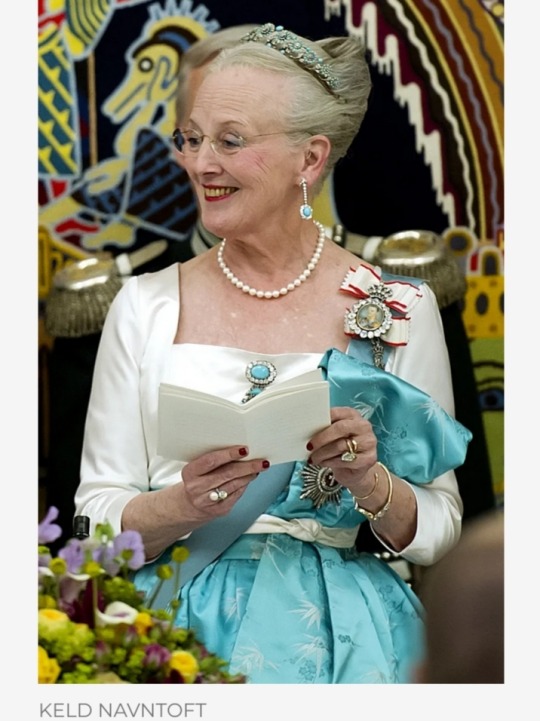
The Turquoise Daisy Bandeau
This girlish beauty has already been passed along to Mary.
The flowery headpiece is elegant and playful, featuring a band of delicate daisies in a bold aquamarine.
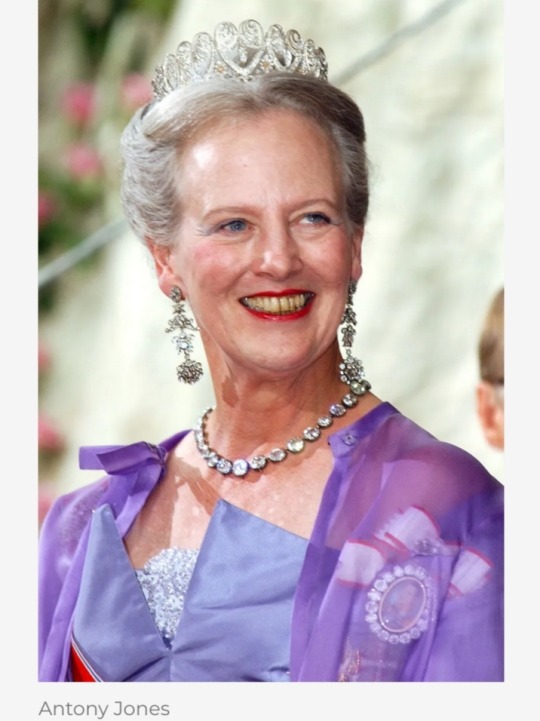
The Palmette Tiara
This curly crown is more effeminate than Mary's current fashion would indicate. Having said that, its intricate beauty and alluring sparkle is undeniable.
The tiara is made up of diamond palmettes and flowers, set upon a link-effect diamond base.
The piece was created in 1856 for Princess Louise of Prussia when she married Grand Duke Frederick.
Queen Ingrid lent Queen Margrethe the diadem in the 1960s, before she officially inherited it on her mother's passing in 2000.
Most notably, she has worn it to the wedding of Crown Prince Haakon of Norway and the wedding of Princess Märtha Louise of Norway.
#Queen Margrethe II#Crown Princess Mary of Denmark#Queen Mary of Denmark#Danish Royal Family#Denmark#Queen’s Crown Collection#tiaras#diadems#Danish Emerald Parure#Danish Ruby Parure#Danish Crown Diamond Parure#Floral Bracelet Choker#Crown Pearl and Ruby Parure with the Floral Aigrette Tiara#Turquoise Daisy Bandeau#Palmette Tiara#parure
4 notes
·
View notes
Text
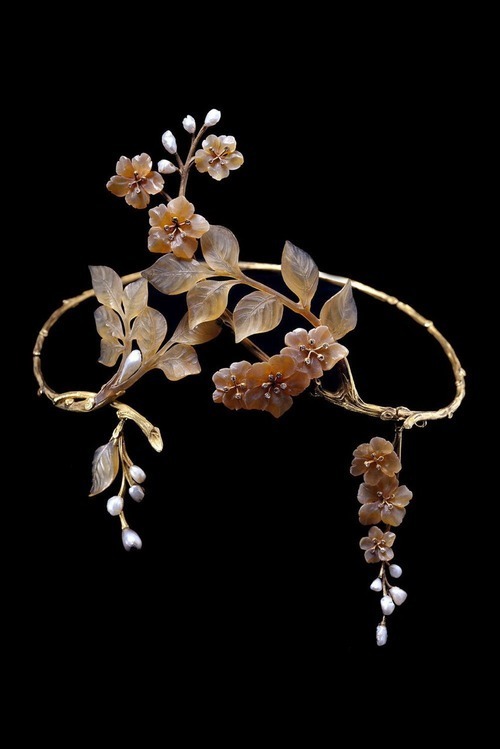
2 notes
·
View notes
Text
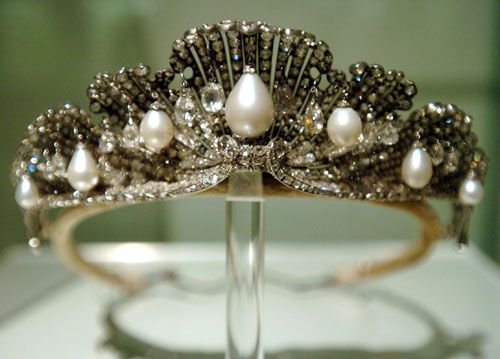
The Mellerio Shell Tiara
Natural Pearls and Diamonds, Created by Mellerio In About 1867
Source: Pinterest
#mellerio#famous jewelry#diamonds#natural pearls#natural pearl and diamond jewelry#pearl and diamond tiara#high jewelry#antique high jewelry#luxury jewelry#fine jewelry#fine jewellery pieces#gemville
141 notes
·
View notes
Text
Sunburst Tiaras
Princess Maria de la Paz of Bavaria's Diamond Sunburst Tiara, 1883

Diamond Sunburst Tiara, 1880s
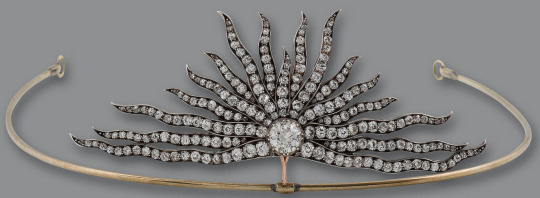
Turquoise Sunburst Tiara, 1880s

Diamond Sunburst Tiara, 1880s

Yellow Diamond Sunburst Tiara by Cartier, 1907

Princess Irina Yusupova's Diamond Sunburst Tiara by Chaumet, 1914

Emerald Sunburst Tiara by Chaumet, 1916
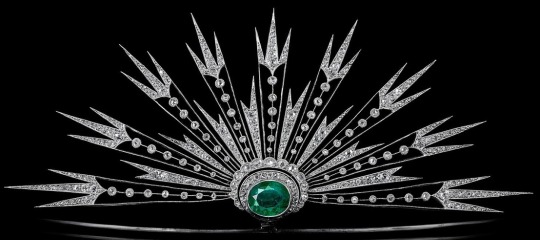
Empress Michiko of Japan's Pearl Sunburst Tiara by Mikimoto, 1960

Soleil Glorieux Tiara by Chaumet, 2019
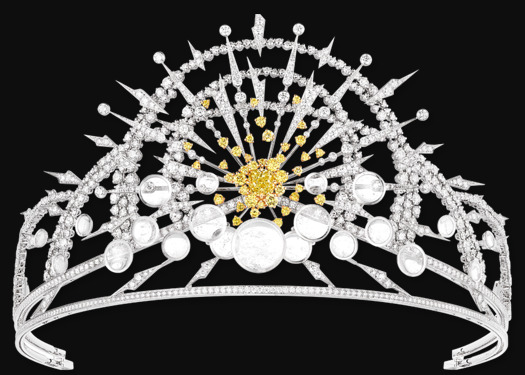
Citrine Sun Tiara by Axenoff, 2020

Tiara Motifs 28 of ∞
#tiara motifs#sunburst#sun#tiara#Chaumet#Cartier#Axenoff#mikimoto#citrine#pearl#diamond#emerald#yellow diamond#Empress Michiko#Japan#Japanese Imperial Family#Princess Maria de la Paz#Bavaria#Germany#Bavarian Royal Family#German Royalty#turquoise#Princess Irina Yusupova#Russia#Russian Imperial Family
649 notes
·
View notes
Text
Cartier Diamond & Pearl Bracelet
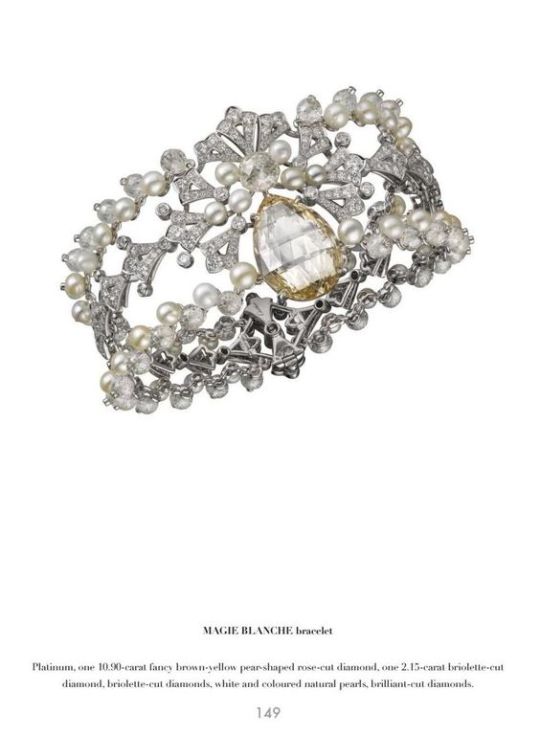
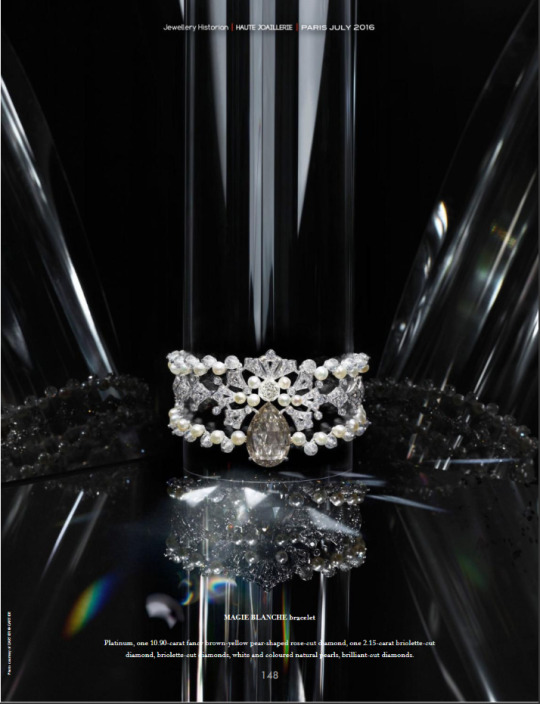
MAGIE BLANCHE Bracelet
Platinum, one 10.90-carat fancy brown-yellow pear-shaped rose-cut diamond, one 2.15-carat briolette-cut diamond, briolette-cut diamonds, white and coloured natural pearls, brilliant-cut diamonds.
- Jewellery Historian, HJ vol.2
#cartier#jewelry#jewellery#jewels#bracelet#bracelets#diamond#diamonds#colored diamond#colored diamonds#yellow diamond#pearl#pearls#jewellery historian#tiara crown#tiaras crowns#tiarascrowns#tiaracrown
121 notes
·
View notes
Text
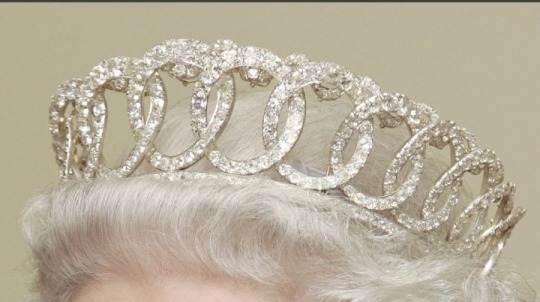
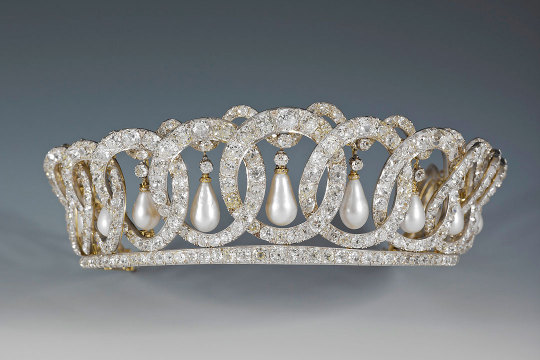
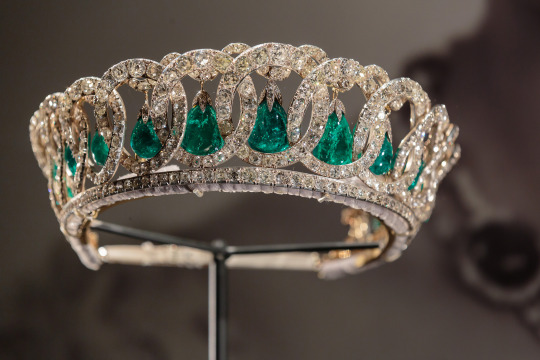
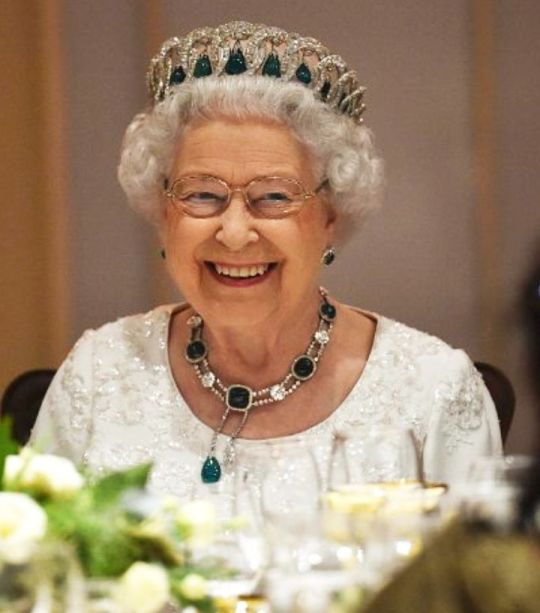
"The Vladimir Tiara" - HM Queen Elizabeth II
Purchased in the 1920s by her grandmother, Queen Mary of Teck, from The Grand Duchess Vladimir (Marie of Mecklenburg-Schwerin, a German princess, who married Grand Duke Vladimir Alexandrovich of Russia, a son of Emperor Alexander II, in the 1870s).
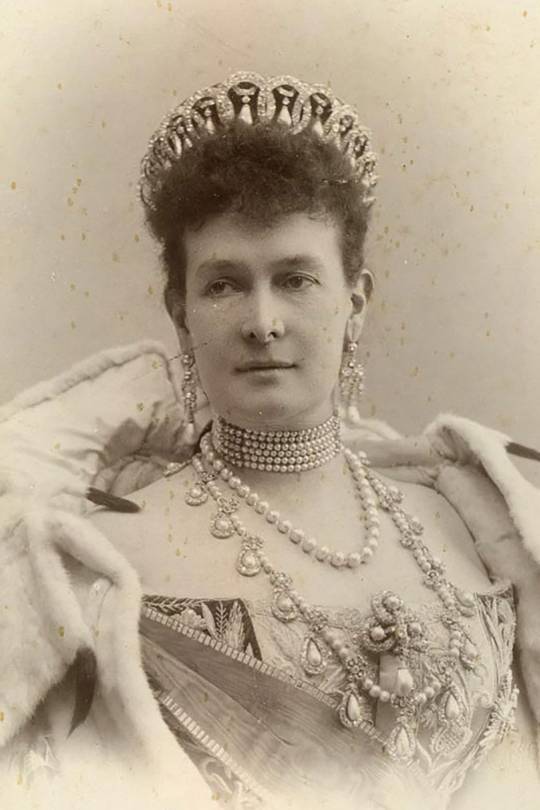
The tiara can be worn with or without drops. Above the three versions:
- without drops
- with pearl drops
- with emerald drops (from the Cambridge emerald collection used to create the Delhi Durbar parure)

#brf#king charles III#The Vault#queen mary of teck#queen elizabeth II#Tiara#pearl#emerald#diamond#royal jewels
4 notes
·
View notes
Photo

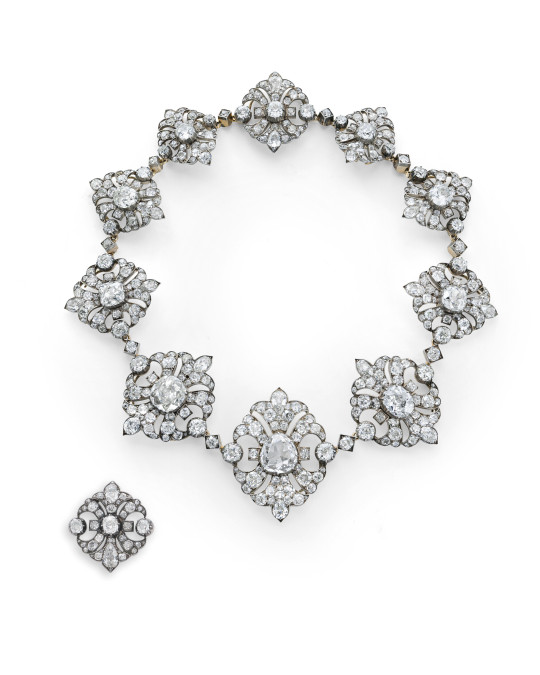
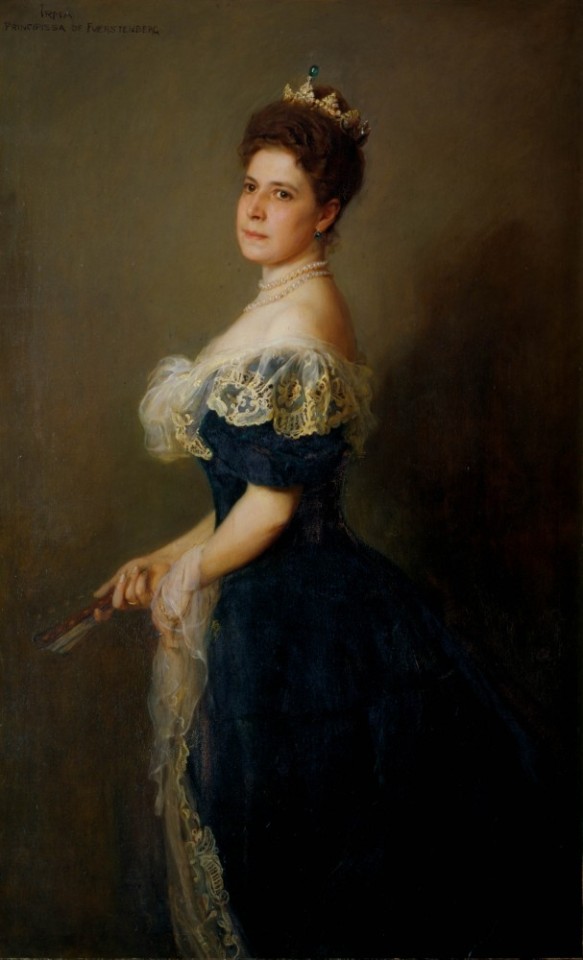
The Fürstenberg Tiara
1870s-1890s
The letter which is kept in the Fürstenberg archives, headed by Flach Mediansky & Paltscho, famous Austrian jewelers at the end of the XIX century, explains the many ways in which the extraordinary tiara can be worn. The first and most obvious one, is to wear it complete. Eleven diamond motives in the shape of a double fleur-de-lys, twenty-three pear-shaped pearls (three larger ones) are all fixed on a old-cut diamond frame. This is the way that tiara must have been worn in court by its then owner: H.S.H. the princess of Fürstenberg, née countess Irma of Schönborn Buchheim (1867-1948). Although most of their lands were located in Germany, in the south of Baden-Württemberg, the princes of Fürstenberg were princes of the Holy Roman Empire and they had received their titles from the Habsburg emperors. They also owned land in Bohemia and a very impressive palace in Vienna. Therefore, they were very much part of the Viennese high society.
The Austrian season always started in January with the New Year’s reception and ended in May with the Corpus Christie’s procession which was described by some as "God’s court ball.” Between those two dates, concerts, lavish dinners, private and official balls would take place. The most important of those events were the balls given at the Hofburg palace by the order of His Majesty Emperor Franz Joseph I. Divided in two categories: Court balls and Balls at Court. 2000 guests were invited to the Court Balls. The list would include guests from the aristocracy, but also from the political and military world. Balls at Court only included 800 guests, chosen exclusively among the higher aristocracy. The princesses of Fürstenberg were included in both lists and were also invited to opera premières and private concerts. Therefore the princesses needed quite a few tiaras, or at least a very transformable one.
In the letter, the jeweller mentions a second way to wear the tiara, simply by removing the diamond motives. This way the 23 pearls seemed to just hang among the hair. A third way, even lighter, but still impressive, was to remove the smaller pearls, leaving only the big ones. A fourth way, was to wear only the diamond motives with no pearls. There was of course a fifth way, not mentioned in the letter, to replace the pearls with other precious stones. And this is exactly what princess Irma of Fürstenberg did when she had her portrait painted by Laszlo. She replaced the central pearl with an emerald drop. The diamond motives could also be assembled to be worn as a rather impressive diamond necklace. And each diamond motive could be worn as a brooch or a hair pin.
For centuries, the Fürstenberg family had been at the very top list of the most important aristocratical families in the Habsburg Empire. The wealth and status of that family was such that in 1770, when archduchess Marie-Antoinette travelled to Versailles where she would marry the future Louis XVI of France, Donaueschingen was chosen as one of her stops. Prince Starhemberg, who was commander of the escort of the archduchess, was so amazed by the splendor of the Fürstenberg court that he wrote to Empress Marie-Thérèse, on the 3rd of May 1770:
Around three in the afternoon, we arrived at the Prince of Fürstenberg’s estate at Donaueschingen. All here is established with magnificence as if the court was that of a sovereign. All the male courtesans were wearing a very rich uniform. And the ladies, including the princess, had white silk dresses embroidered with golden lace. The Prince had all the roads of his principality rebuilt for the archduchess’ trip. It must have cost him more than 200,000 gold florins.
-Vincent Meylan
Christie’s
#tiara#necklace#fashion history#historical fashion#victorian#1870s#1880s#1890s#19th century#diamond#pearl#jewelry#austria#christies
322 notes
·
View notes
